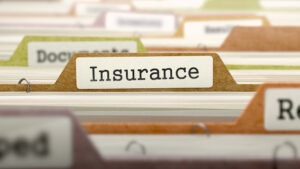Insurance, especially auto insurance, is never an easy concept to master. With so many options, and differences in requirements across state lines, many people can be confused by what they’re actually buying and paying for. Over the next few posts I will explain various aspects of insurance, from specific coverages to situations that occur and how to use your coverage.
Automobile liability insurance is a type of coverage that is required by law in most states as it compensates the victims of collisions. Essentially, if you or your car causes an accident, liability coverage will cover the other person’s damages, including property damage to the car, payments for medical bills, lost wages, physical injuries, pain, suffering, and inconvenience. As our legal system is built upon the principle that we are each responsible for our conduct, liability insurance serves to protect the assets of an at fault driver. As such, it is important to purchase insurance with a coverage limit that provides enough coverage so that your personal assets are not exposed.
Each state sets minimum coverage limits all drivers must purchase, but you can choose to purchase additional coverage. If you look at your car insurance policy, you may see three liability coverage limits:
- Bodily Injury Liability Limit per Person
- This establishes a maximum payout for each individual who is injured in an accident caused by you.
- For example: If you rear end a car carrying two people and your bodily injury liability limit per person is twenty-five thousand dollars, your insurance company can pay each up to twenty-five thousand dollars in compensation for their injuries. The insurance company does not need to use the entire amount, and all claims must be backed with medical paperwork and other documents to prove the value of the claim. If the injuries surpass the limit, you are personally responsible to cover the remaining damages of the person hurt.
- Bodily Injury Liability Limit per Accident
- This controls the amount your insurance provider will pay out for all damages resulting from a single accident you cause. Again, it is very important to set this limit at an amount that makes you comfortable and protects your assets, for if the damages go above the per accident limit, you are responsible to help pay for the damages incurred by multiple people, out of pocket.
- For example: If you rear end a car carrying three people and your bodily injury liability limit per person is twenty-five thousand dollars, each person injured can be paid up to twenty-five thousand dollars to cover their damages. However, if your bodily injury liability limit per accident is only fifty thousand dollars, that sum is the maximum amount the insurance company will pay and has to be split between the three injured people, leaving your personal assets exposed if each person is not fully compensated by the amount each received. .
- Property Damage Liability Limit
- This is the maximum amount your insurer will pay to repair damage you cause to another party’s property.
In Virginia, D.C., and Maryland liability coverage is required. Virginia and D.C. require the same liability limits set at 25,000 bodily per person, 50,000 bodily per accident, and 10,000 property damage. Maryland sets theirs a bit higher with 30,000 bodily per person, 60,000 bodily per accident, and 15,000 property damage. These are the minimum requirements, but in order to protect yourself and others, I highly suggest increasing your coverage limits.
Last detail to note is that liability coverage does not pay for personal property damage or personal medical payments in regards to an accident you cause. Liability coverage only covers the innocent victims of an accident you caused.

Tom Curcio has devoted his career to representing people seriously injured or killed in car, pedestrian, bicycle, and truck crashes, and by dangerous dogs, unsafe products, and premises. He works tirelessly to obtain the compensation his clients are legally entitled to so they may rebuild their lives with dignity. Tom is the co-author of the book Evidence For The Trial Lawyer, and a much sought-after speaker on personal injury, trial practice, evidence, and professionalism. Contact Tom at tcurcio@curciolaw.com.










Comments for this article are closed.